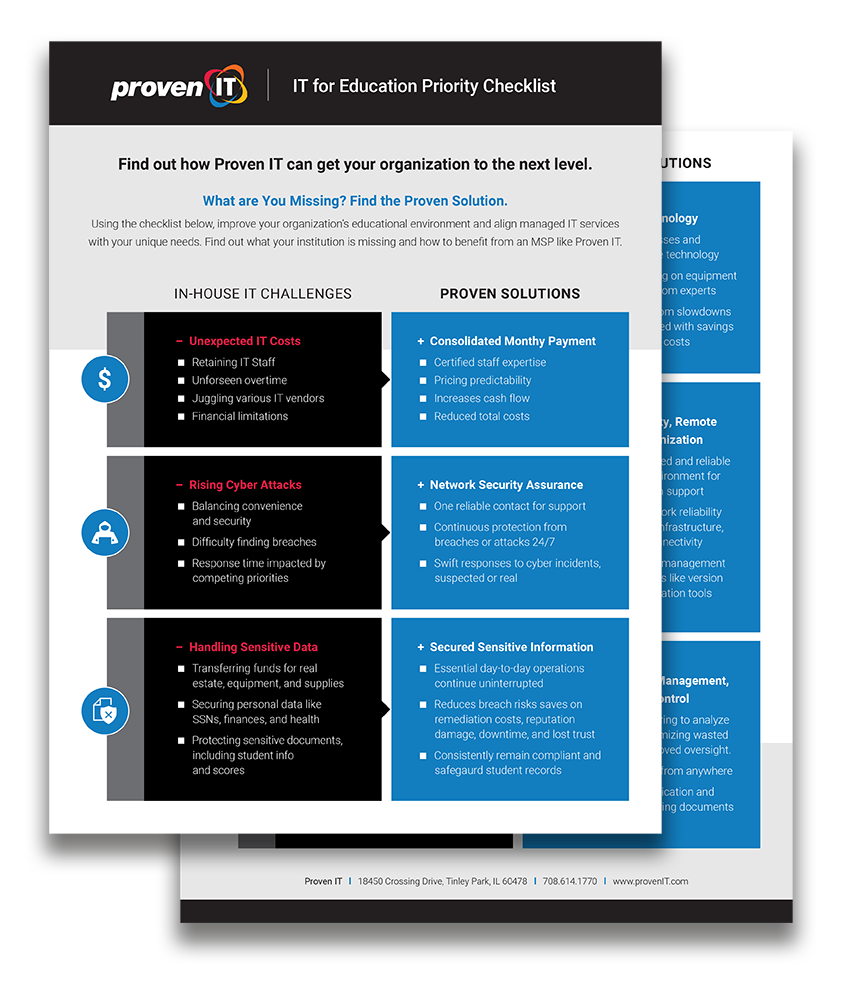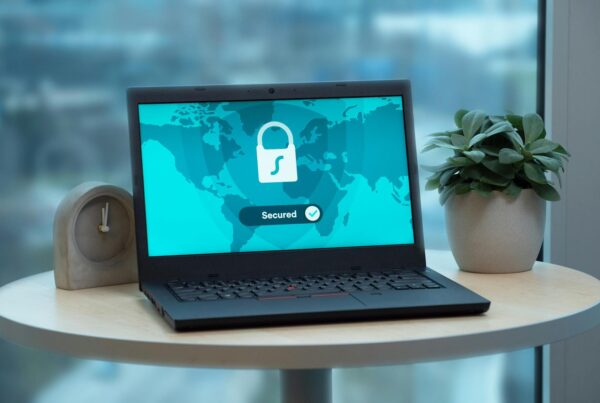These days, educational institutions rely heavily on technology for everything from administrative tasks to interactive learning experiences. The integration of digital tools into the curriculum has transformed the way students learn and teachers instruct. Thus, efficient IT support is crucial not only to ensure that technological tools function properly but also to enhance the learning experience for students and teachers. Without adequate IT support, schools risk facing disruptions that can hinder educational processes and administrative efficiency.
Moreover, IT support in schools plays a vital role in maintaining the infrastructure that supports online learning platforms, digital communication tools, and data management systems. As educational institutions increasingly adopt hybrid learning models, the demand for robust IT support systems have grown increasingly significant. Schools that invest in comprehensive IT support can improve operational efficiency, ensure the reliability of educational technologies, and provide a better learning environment for students. Thus, understanding the importance of IT support is key to fostering an educational environment that is both innovative and resilient.
IT Support for Educational Institutions
Managed IT support involves outsourcing your school’s IT needs to professionals who specialize in maintaining and optimizing your technological infrastructure. This approach allows schools to access expert support without the need to hire a full-time, in-house IT team, which can be costly and resource-intensive. By leveraging educational IT support, educational institutions can benefit from the expertise of seasoned IT professionals who are well-versed in the latest technological advancements and security protocols.
Managed IT support covers various services, including network management, hardware maintenance, and software updates, ensuring that your educational institution remains operational and efficient. This proactive approach to IT management can significantly reduce downtime, prevent technical issues, and improve the overall functionality of school systems. Furthermore, managed IT services often include 24/7 support, providing schools with the peace of mind that technical assistance is always available. By choosing managed IT support, schools can focus more on educational outcomes and less on technical challenges.
Benefits of Managed Network Services
Managed network services are a subset of managed IT support that focuses specifically on your school’s network infrastructure. This includes ensuring reliable internet connectivity, securing network access, and managing network traffic to prevent slowdowns during peak usage times. With the increasing reliance on online learning platforms and digital resources, having a robust network infrastructure is more critical than ever. By entrusting these tasks to professionals, schools can ensure seamless online learning experiences and efficient administrative operations.
Additionally, managed network services provide schools with the ability to scale their network capabilities in response to changing demands. Whether it’s accommodating more devices, expanding bandwidth for high-definition video streaming, or implementing new security measures, managed network services offer the flexibility needed to adapt to the evolving educational landscape. Moreover, these services include regular monitoring and maintenance, ensuring that potential issues are addressed before they escalate into significant problems. This proactive approach helps schools maintain high-performance networks that support both teaching and learning activities effectively.

Cybersecurity: A Priority for Educational Institutions
Cybersecurity threats are a significant concern for educational institutions. Schools handle vast amounts of sensitive data, including student records and financial information, making them attractive targets for cybercriminals. A recent article by CBS News, states that between January 2023 and June 2024, there were at least 83 potential ransomware attacks on school districts. Though this number may be higher as these are only the ones that were publicly disclosed. The consequences of a data breach can be severe, affecting not only the institution’s reputation but also compromising the safety and privacy of students and staff. Protecting this data is not just a legal requirement but also a critical component of maintaining trust with students, parents, and staff.
In addition to safeguarding sensitive data, strong cybersecurity measures are essential for ensuring the continuity of educational operations. Cyberattacks can disrupt classroom activities, hinder access to learning materials, and lead to financial losses. As the education sector continues to embrace digital transformation, the need for comprehensive cybersecurity strategies becomes increasingly paramount. Schools must prioritize cybersecurity to create a secure learning environment that supports innovation while protecting against potential threats.
Implementing Cybersecurity for Schools
Cybersecurity measures for schools should include a combination of hardware and software solutions, as well as policies and training for staff and students. It’s important to adopt a multifaceted approach that addresses both technological and human factors. Key components of a robust cybersecurity strategy include:
- Firewall and Antivirus Protection: Installing and regularly updating firewall and antivirus software to protect against malware and unauthorized access. These tools act as the first line of defense against cyber threats, helping to prevent malicious software from infiltrating school networks.
- Data Encryption: Encrypting sensitive data to ensure that even if it is intercepted, it cannot be read without the correct decryption key. Encryption is crucial for safeguarding information transmitted over the internet and stored on school servers.
- Regular Security Audits: Conducting regular audits to identify and address vulnerabilities in your school’s IT infrastructure. Security audits help schools stay ahead of potential threats by pinpointing weaknesses that need to be fortified.
- User Training: Educating staff and students about cybersecurity best practices, such as recognizing phishing emails and using strong passwords. Training programs empower individuals to become active participants in maintaining the institution’s cybersecurity posture.
Data Compliance Solutions
Compliance with data protection regulations is essential for educational institutions. Schools must implement data compliance solutions to ensure they adhere to legal requirements and protect sensitive information. This involves understanding the specific data protection laws applicable to educational settings and implementing measures to comply with them.
Maintaining secure systems, documenting data handling practices, and ensuring that all staff are aware of compliance policies are vital components of a comprehensive data compliance strategy. Schools should also consider appointing a data protection officer to oversee compliance efforts and address any issues that arise. By prioritizing data compliance, educational institutions can avoid legal penalties and build trust with stakeholders by demonstrating their commitment to protecting personal information.
Conducting End-of-Year IT Assessments
As the school year comes to a close, conducting a thorough IT assessment is crucial to identify areas for improvement and prepare for the upcoming academic year. An end-of-year assessment provides schools with an opportunity to reflect on their technological strengths and weaknesses, allowing them to make informed decisions about future investments. Here are the key steps in conducting an effective IT assessment:
Review Existing IT Infrastructure
Begin by evaluating your current IT infrastructure. This involves assessing the condition and performance of hardware and software, as well as the efficiency of your network systems. Identifying any outdated equipment that needs replacement and considering upgrades to newer technologies can enhance learning and administrative processes. Schools should also assess the compatibility of their systems with the latest educational tools and applications to ensure seamless integration.
Moreover, reviewing IT infrastructure involves examining the scalability of current systems. As student enrollment numbers fluctuate and educational demands evolve, schools must ensure their infrastructure can adapt to these changes. A thorough review helps institutions plan for future growth and technological advancements, ensuring they remain agile and responsive to educational needs.
Assess Cybersecurity Measures
Next, review your school’s cybersecurity measures. Check the effectiveness of your current security protocols and identify any potential vulnerabilities. This step is crucial in ensuring that your institution is protected against evolving cyber threats. Schools should also consider conducting penetration testing to evaluate the resilience of their security systems and uncover hidden vulnerabilities.
In addition to technical assessments, schools should review their cybersecurity policies and procedures. Ensuring that staff and students are aware of their roles in maintaining security is essential for creating a culture of cybersecurity awareness. By regularly assessing cybersecurity measures, educational institutions can stay ahead of threats and ensure the safety of their digital environments.
Without a vulnerability assessment,
your IT and cybersecurity strategy is
merely a shot in the dark.
Evaluate IT Support and Services
Assess the level of IT support and services your school receives. Determine if your current managed IT support provider is meeting your institution’s needs or if there are areas where additional support is required. This evaluation will help you make informed decisions about continuing or changing your IT support arrangements. Schools should consider factors such as response times, expertise, and the range of services offered when evaluating IT support providers.
Furthermore, evaluating IT support and services involves assessing the integration of support systems with school operations. Effective IT support should align with educational goals and enhance the overall functioning of the institution. By thoroughly evaluating IT support and services, schools can identify opportunities to optimize their technological resources and improve educational outcomes.
Take Our Quick, 5-minute self-evaluation and receive your personalized Opportunity Report as a technology roadmap to your future.
Plan for the Future
Based on your assessment findings, develop a plan for implementing necessary changes and improvements. This may include upgrading hardware, enhancing cybersecurity measures, or expanding managed IT support services. Having a clear plan in place will help ensure a smooth transition into the new school year. Schools should also establish timelines and allocate resources for implementing their plans, ensuring that improvements are completed efficiently.
In addition to immediate improvements, schools should consider long-term strategies for IT development. This includes staying informed about emerging technologies and trends in education, allowing institutions to remain at the forefront of digital innovation. By planning for the future, educational institutions can create a sustainable technological environment that supports growth and adaptation in the years to come.
Get a free Technology Solutions for Education Checklist which includes common in-house challenges and their solutions.

Preparing for the 2025-2026 School Year
By prioritizing IT support and cybersecurity, your educational institutions can create a secure and efficient learning environment for students and staff. Conducting end-of-year IT assessments allows you to identify areas for improvement and implement necessary changes before the start of the 2025-2026 school year. A proactive approach to IT management ensures that your school is equipped to handle the challenges of the digital age and can continue to provide high-quality education.
By investing in Proven IT’s managed IT support, managed network services, and proactive cybersecurity measures, your school can ensure it is well-prepared for the challenges and opportunities of the digital age. These investments not only protect sensitive data but also enhance the overall educational experience, setting your institution up for success in the years to come. Embracing technological advancements and prioritizing security will enable you to foster an innovative and secure educational environment, ultimately benefiting students, staff, and the wider educational community.






